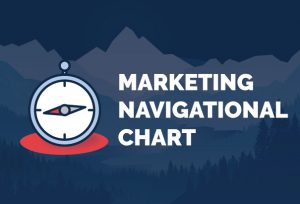Designing PPC Banner Ads
Taking the time to critically design banner ads is a must for success in the online advertising display landscape. Achieving campaign goals can be easily ruined or minimized by a bad design. Over 5 trillion ads are served in the U.S. alone each year. Because of their abundance, banner ads are often tuned-out by users, and visibility issues can cause problems. According to Google, 56.1% of impressions are not even seen. In other words, an ad served doesn’t necessarily equal an ad viewed. Between banner blindness and visibility it’s harder than ever to get a click. Therefore, a well-designed banner is essential for success. Take thoughtful consideration of all the design elements and tools at your disposal.
According to an AdKeeper survey, 43% of respondents said online banner ads don’t seem interesting or engaging and 31% of respondents said they only wanted to click ads when they were in the mood or interested in looking at them.
Banner Design Guidelines
These are a collection of generally accepted design guidelines. Experiment with each. A/B testing is a method to learn what works and what doesn’t. Keep in mind that the criteria for a good banner ad is performance as opposed to beauty. A graphic designer may have to sacrifice personal tastes to run an effective campaign.
Simplicity Rules. Keep copy simple and un-clutter your visuals. Be content-wise. The more content and visual complexity, the more likely viewers will be confused and alienated. Viewers are probably only going to glance at your banner for a second; don’t overwhelm them.
Have a clear call to action. Just like a text ad, tell the viewer what you want them to do. Use contrasting colors. Some marketers argue that red can increase click-through rates significantly, but be mindful of the brand colors.
Design Unity. Images and color schemes used on the banner should be a part of the landing page. Branding is part of online advertisement. Logo, imagery, and messaging should be consistent on all channels.
Top performing ad sizes. There are many ad sizes. Start with the ones known to perform better and add on as time allows. According to Google Adsense the most successful sizes are:
- 336×280 Large Rectangle
- 300×250 Medium Rectangle
- 728×90 Leaderboard
- 300×600 Half Page
- 320×100 Large Mobile Banner
Maintain component hierarchy. Banner ads are designed to increase brand awareness and drive traffic to your website. They have 3 basic components:
- Value proposition: It should take up the most space and be the first thing that you users’ eyes are attracted to. Showcase why a user should click on the banner. Define the promise or experience the user can expect. For example, special offers, product selling feature and prices, i.e. ‘Voted Top’, ‘30% off,’ or ‘Limited time offer’.
- Call to action: The call to action is usually made of text or a button with phrases like ‘Download Tutorial,’ ‘Learn More,’ ‘Watch Video,’ or ‘Register Here’. It should be a standout focal point, prompting viewers to click on it, but please resist ‘Click Here’. It’s one of our PPC pet peeves. For one “click” puts too much focus on mouse mechanics as opposed to “view” which is the user’s task. – smashingmagazine.
- Logo: Always include your company logo to build brand awareness. Make sure that it’s visually dominant but not as dominant as the value proposition and the call to action.
Button Usage. Buttons are known to increase click-through rate. If included in an ad, place them after your copy, on the lower right side, in (tastefully) contrasting colors. This is another brand decision. Keep buttons looking consistent throughout all ads.
Defined frame. People’s eyes are naturally drawn to a subject inside a frame. Make sure that your banner ads have a clearly defined frame by extending the graphics to all edges of the box. If your ad is white, put a 1 pixel gray border around the ad. If it’s not white, you can still use subtle borders which make it pop just a little more.
Instantly readable text. Think about color, size, font and typography rules. Make the headline and body copy different sizes. Remember the simplicity rule and keep the message short. Make the headline and body copy 4 lines or less each. Don’t use cursive fonts, script fonts, extremely thin fonts, or distracting decorative fonts. Do not use all uppercase copy. Use 10 pt. font or larger (exception only for disclaimer or copyright notice).
Branding. Make sure the graphic design is consistent with the company’s branding. In addition, the message and voice should be maintained in the copy.
File formats. .JPG, .PNG, .GIF, or Adobe Flash files are the accepted file formats. Keep in mind that flash banner ads are not supported on all devices so always provide your banner in .GIF form.
Small file size. The smaller the better, under 150 kb according to Google Adwords. Your ad needs to load fast on that webpage before viewers scroll down and miss it.
Standardization and Specification. The Interactive Advertising Bureau (IAB), maintains a specification of the standards for banner ads called IAB Display Advertising Guidelines. The Bureau also publishes guidelines on specifications such as maximum video frame rate, the limit of the Z-Index of the unit and file size.
Imagery Usage. Be selective. Use only when you need it. Choose relevant images, graphics or photos that enhance your message and that are directly related. Do not use abstract concepts. Think clear and obvious.
Instill a sense of urgency. Visual urgency can be accomplished by use of contrasting, bold text colors.
Choose appropriate colors. Besides branding considerations, think about the emotional association of a color. You may have to think globally because not all countries and cultures have the same association.
Animation. Movement can capture attention and be effective advertising. They usually out-perform static banner ads. Make sure that they don’t distract from the message of your ad. Keep it simple. Animations should last no longer than 15 seconds. Make sure that they don’t loop more than 3 times, and the last frame should be a call to action.
Interactive. Technology has advanced so that banners can do even more than animation. When appropriate take advantage.
Responsive Design. Finally, taking responsive design into account. Proof your ad designs and maximizing their impact across a variety of screen sizes and devices. As mobile traffic rises, designing responsive ads becomes increasingly vital to success. Test all the other points discussed as the ad flexes. Take a look at responsiveads.com for some ideas about how ads can be implemented responsively.
Remember, a successful banner ad needs more than well-planned text. All the PPC research in the world can’t redeem a horribly made display advertisement.
Want to learn more about our PPC strategies? Check out the Rocket Clicks Paid Search page.





















